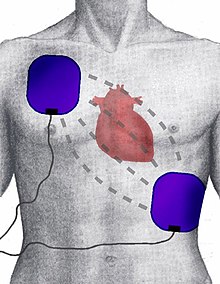 Doctors are implanting high-tech heart devices in thousands of people who probably do not need them, a new study finds. The procedures cost more than $35,000, involve surgery and anesthesia, and may unnecessarily harm some patients.
Doctors are implanting high-tech heart devices in thousands of people who probably do not need them, a new study finds. The procedures cost more than $35,000, involve surgery and anesthesia, and may unnecessarily harm some patients.
The devices, called defibrillators, fire an electrical shock to jolt the heart back into a normal rhythm if it starts to beat in a disordered way that can cause sudden death. In people who truly need them, for conditions that can fatally disrupt heart rhythm, defibrillators can be life-saving.
Each year, about 100,000 are implanted in the United States. Former Vice President Dick Cheney received one in 2001.
The new findings fit into a larger pattern of misuse of defibrillators: paradoxically, previous research has also found that many people who need defibrillators do not get them. The reasons are not known, but may include the cost and also reluctance by both doctors and patients to accept a surgically implanted device, especially if the patient is feeling fine and has no symptoms of the underlying problem.
Professional societies set guidelines that specify when the defibrillators should be used, based on studies showing which patients they help. To find out if doctors have been complying, researchers examined the records of 111,707 people who received the implants at 1,227 hospitals in the United States from January 2006 to June 2009. The records were part of a national registry, and the National Heart, Lung and Blood Institute paid for the study.
The researchers were surprised to find that more than 25,000 people — 22.5 percent of all those who got defibrillators — did not match the guidelines. Most of the patients were 64 to 68. For unknown reasons, blacks and Hispanics were more likely than whites to get defibrillators they probably did not need. At many centers, more than 40 percent of the devices went to patients outside the guidelines.
More...





 The US supreme court on Monday heard arguments in a case that could threaten Americans’ access...
The US supreme court on Monday heard arguments in a case that could threaten Americans’ access... Toothpaste can be widely contaminated with lead and other dangerous heavy metals, new research shows.
Most of...
Toothpaste can be widely contaminated with lead and other dangerous heavy metals, new research shows.
Most of...






























